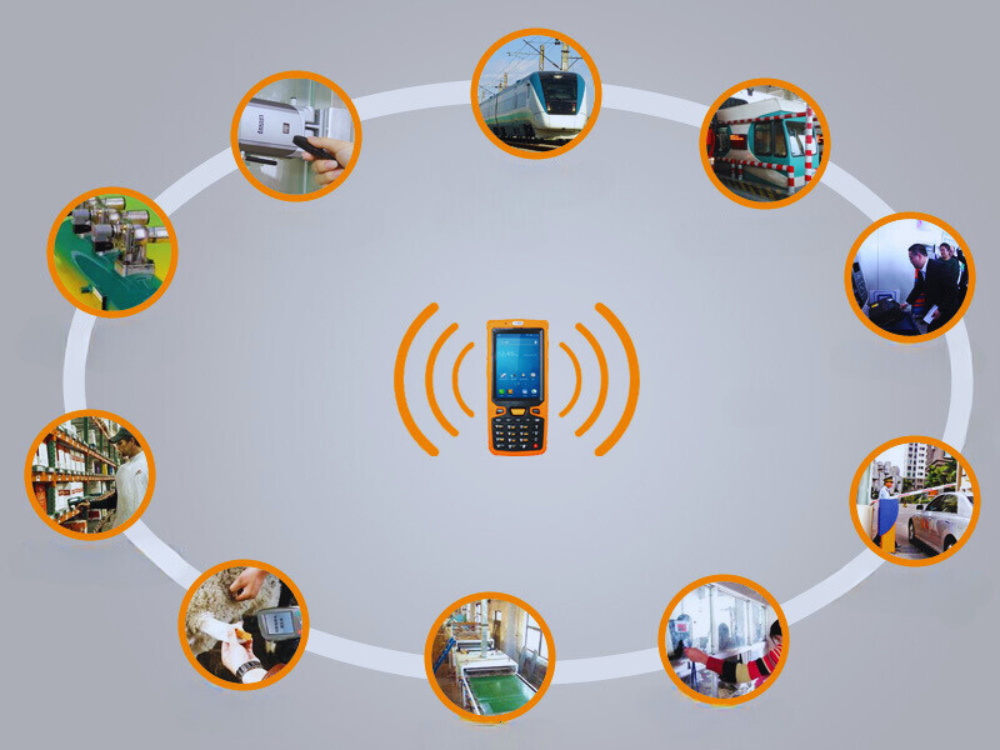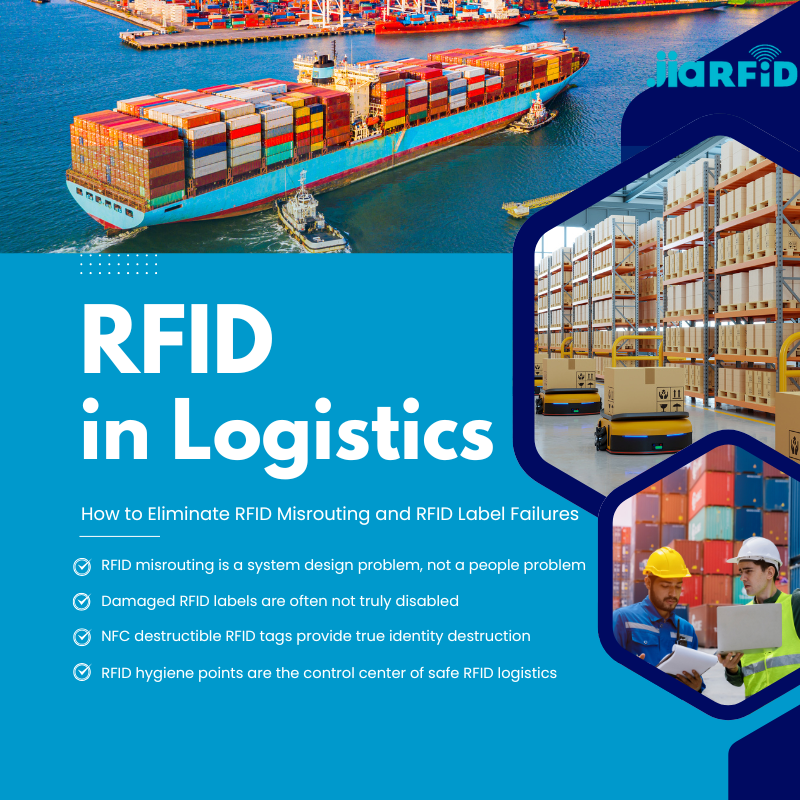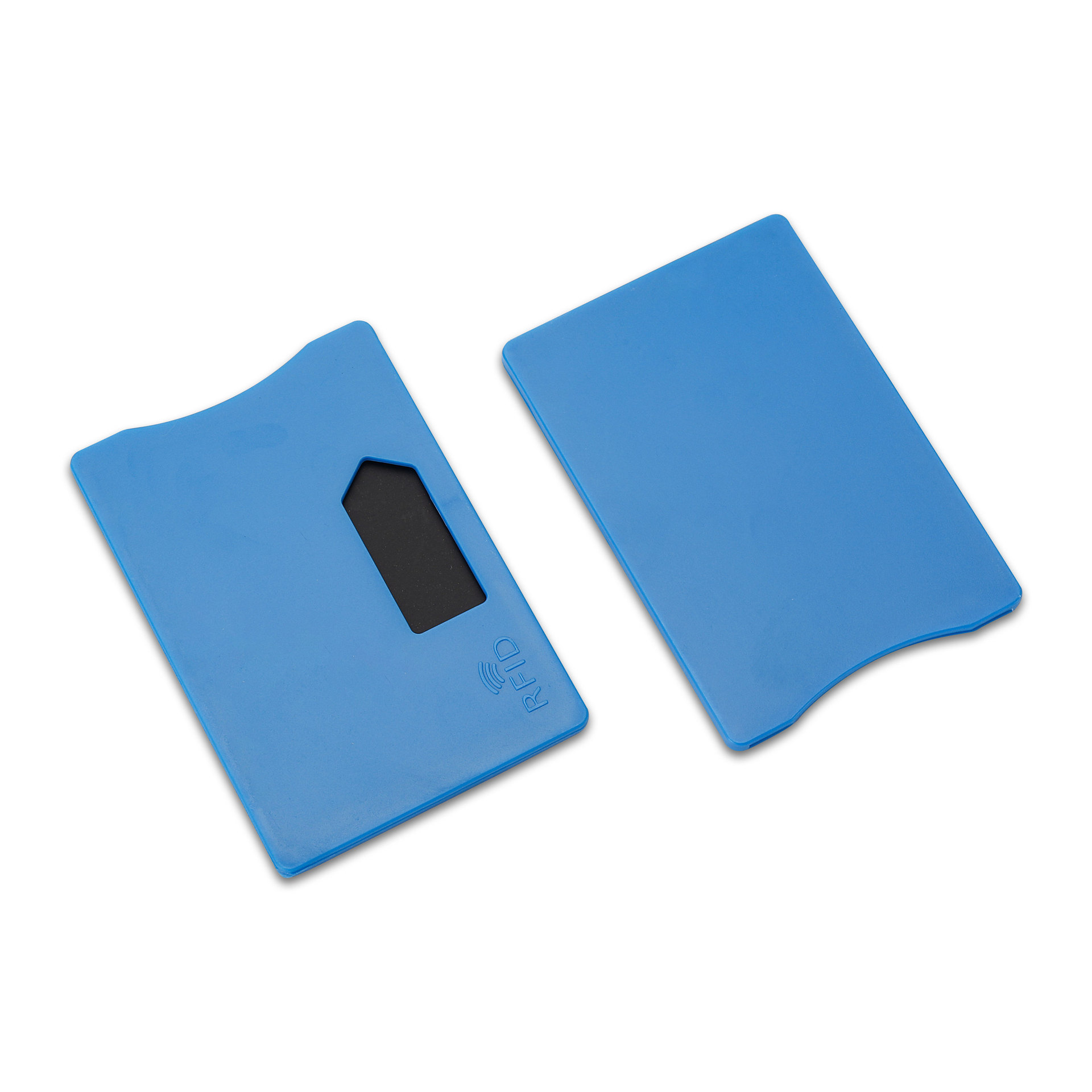
Understanding UHF RFID Systems: A Comprehensive Guide
Table of Contents
Summary
This article provides a detailed exploration of how UHF RFID systems function, covering the core components, operational principles, and key factors that influence their effectiveness.

Overview of UHF RFID Systems Operation
UHF RFID systems operate by utilizing radio waves to communicate between RFID readers and tags. The RFID reader emits radio signals that activate passive RFID tags, enabling them to transmit unique identification data. These systems are known for their efficiency in environments requiring long-range and high-speed data capture. Typical operational ranges extend up to 12 meters. This guide outlines the principal elements of UHF RFID systems, including antennas, readers, tags, and encoding processes, offering insights into their roles and functionalities.
Core Components of UHF RFID Systems
RFID Antennas
RFID antennas are crucial for transmitting and receiving radio waves that interact with RFID tags. Key considerations include:
- Types of Antennas:
- Circular Polarization Antennas:Ideal for environments where tag orientation varies, as they can read tags from multiple angles.
- Linear Polarization Antennas:Best used when tag orientation is consistent and controlled.
- Near Field (NF) Antennas:Designed for very short-range reading, effective within a few centimeters.
- Antenna Specifications:
- Gain:Higher gain (e.g., 8.5-10 dBi) increases power and reading range.
- Beam Angle:Wider beam angles (e.g., 70°, 100°) cover larger areas but may reduce detection distance.
- Number of Ports:High-performance readers often support 2, 4, or 8 antennas. Some systems use multiplexers to connect up to 32 antennas to a single reader.
RFID Readers
RFID readers are available in several types, each suited to different applications:
- Fixed RFID Readers:Used for stationary applications such as conveyor belts or doorways. Notable models include Impinj R420, ThingMagic M6e, and Zebra FX9500.
- Portable RFID Readers:Ideal for mobile applications and field use. Recommended models are Zebra MC9190, Impinj AB700, and Zebra RFD8500.
- USB RFID Readers:Suitable for tasks requiring low tag volumes, such as document validation. Examples include Nordic Stix and ThingMagic USB Reader.
Choosing the Right Reader:
- Reading Area:Fixed readers are best for specific locations, while mobile readers offer flexibility for on-the-go scanning.
- Reading Ratio:Determined by the number of tags and environmental factors such as the presence of metal or liquids.
Regulatory Compliance: Adherence to regional regulations (e.g., ETSI, FCC) for frequency and power limits is necessary.
RFID Labels and Tags
RFID tags come in various forms and have several critical attributes:
- Size:Larger antennas generally provide better sensitivity and detection reliability.
- Orientation and Reading Angle:Circular antennas accommodate various tag orientations, while linear antennas require careful tag positioning.
- Integrated Circuit (IC):Common ICs include Impinj Monza, NXP, and Higgs, with varying memory capacities and features.
- Location and Environmental Factors:Tags must be chosen based on their placement and environmental conditions, such as exposure to metal or water.
Encoding RFID Tags
Encoding involves writing information to RFID tags. This can be accomplished using:
- RFID Printers:Devices like Zebra ZT410 and R110xi can encode and print barcodes or numbers.
- Readers:Fixed, portable, or USB readers can also be used for encoding purposes.
Information Stored:
- EPC (Electronic Product Code):The primary data recorded and modified.
- TID (Tag Identifier):A unique, unmodifiable number assigned at manufacturing.

Comparative Overview of UHF RFID Systems Components
Component | Description | Considerations |
RFID Antennas | Emit and receive radio waves to interact with RFID tags. | Type, gain, beam angle, and number of ports. |
RFID Readers | Devices for reading and processing RFID tag data. | Fixed vs. portable, reading area, and compliance. |
RFID Labels and Tags | Tags with unique identifiers and ICs for various applications. | Size, orientation, IC type, and environmental factors. |
Encoding | Process of writing data to RFID tags. | Use of printers and readers for encoding EPC and TID. |
Conclusion
UHF RFID systems are integral to efficient and effective asset and inventory management. By understanding the roles of key components such as antennas, readers, and tags, as well as the process of encoding, organizations can optimize their RFID implementations. Whether enhancing tracking capabilities or streamlining operations, leveraging the full potential of UHF RFID technology can yield significant benefits in various applications.
Comments
Hot Products

RFID in Logistics: How to Eliminate RFID Misrouting and RFID Label Failures
RFID in logistics is more than just a tool to speed up processes. It has become a key part of how modern supply chains operate.

What Is RFID Waste Management
Imagine a city where every trash bin speaks — not literally — but through a tiny chip that tells the system when it’s full, when it’s emptied, and where it went. That’s what RFID waste management is doing today.

What are Bolt Seals and their Applications? | Complete Guide
In global trade and logistics, bolt seals play a crucial role in ensuring cargo security and compliance. These small but powerful devices are designed to lock shipping containers, trailers, and cargo doors with a tamper-evident mechanism.

What is an RFID Card Protector? Benefits, Use Cases, and Buying Guide
RFID technology (Radio Frequency Identification) is everywhere: in your credit cards, ID badges, transit passes, hotel room keys, and more. It offers speed and convenience, but it also opens the door to a new kind of digital theft called “skimming.” That’s where an RFID card protector comes in.

RFID Wristbands for Events: Bulk Buying Guide for Organizers
RFID wristbands for events are becoming the go-to solution for organizers who need faster entry, fraud prevention, and cashless payments at concerts, festivals, and sports venues. Unlike paper tickets or QR codes, these smart wristbands use embedded chips to streamline access, secure transactions, and improve the guest experience.

How RFID Tag on Windscreen Improves Vehicle Access Control and Toll Systems
In today’s fast-paced world, vehicle identification needs to be quick, secure, and contactless. An RFID Tag on the Windscreen provides exactly that — a reliable way to manage toll collection, parking, and gated access without stopping vehicles.
Tags
RELATED BLOGS

RFID in Logistics: How to Eliminate RFID Misrouting and RFID Label Failures
RFID in logistics is more than just a tool to speed up processes. It has become a key part of how modern supply chains operate.

What Is RFID Waste Management
Imagine a city where every trash bin speaks — not literally — but through a tiny chip that tells the system when it’s full, when it’s emptied, and where it went. That’s what RFID waste management is doing today.

What are Bolt Seals and their Applications? | Complete Guide
In global trade and logistics, bolt seals play a crucial role in ensuring cargo security and compliance. These small but powerful devices are designed to lock shipping containers, trailers, and cargo doors with a tamper-evident mechanism.




